There will probably be jet liners less complicated to start than Henry Ford’s 1908 masterpiece, the Model T.
Clamber up into the driving seat and you’ll see two steering column stalks, right is the throttle, left the ignition advance and retard – think of them as cruise control and engine management. Set the former about half way up and the advance fully retarded. I presume you’ve lifted the front seat to check the fuel tank’s contents with a dip stick. Fuel on, magneto on, handbrake engaged which operates the clutch and the brake, choke on (it’s at the front of the car), then turn the starting lever, fingers and thumb on the same side of the handle and pulling upwards.

Get it wrong and it could break your wrist and tangle you up in a load of unfenced machinery. If it starts (and generally, it should), then rush round to the cockpit and advance the ignition, and adjust the throttle until the 2.9-litre, 20bhp beast is idling reasonably quietly.
Did I mention the pedals? No? The right one is the brake, the middle one is reverse and the left is the clutch, but not like any clutch you’ve driven before. Release the hand brake and the left and right pedals move upwards and into contention, then press the left-hand ‘clutch’ and you’ve got first gear, half way up is neutral and foot off completely is second or top gear.
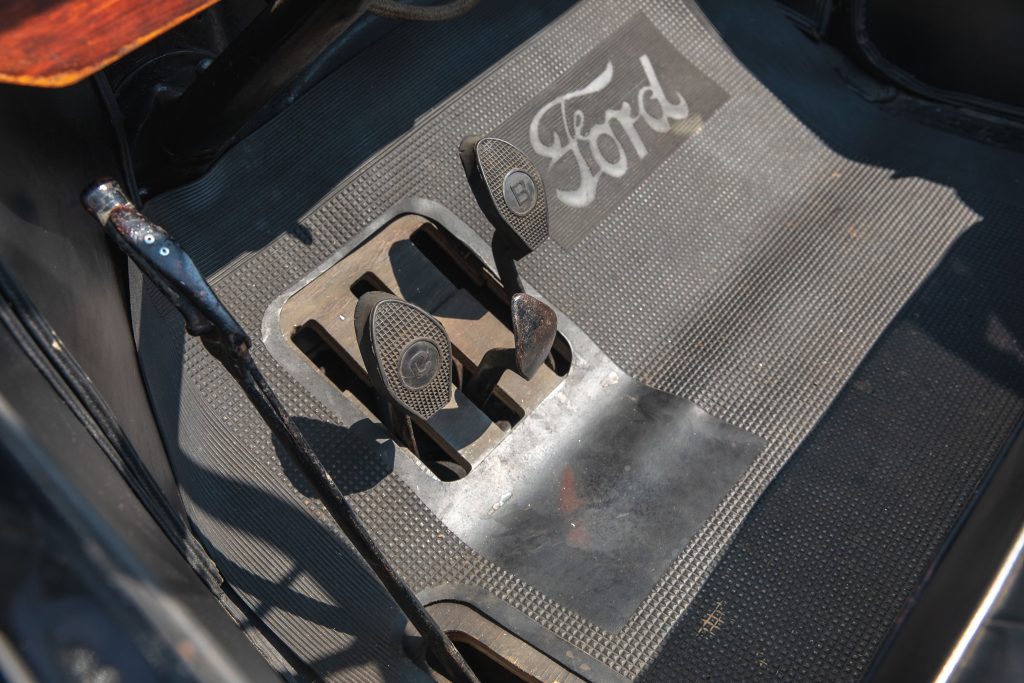
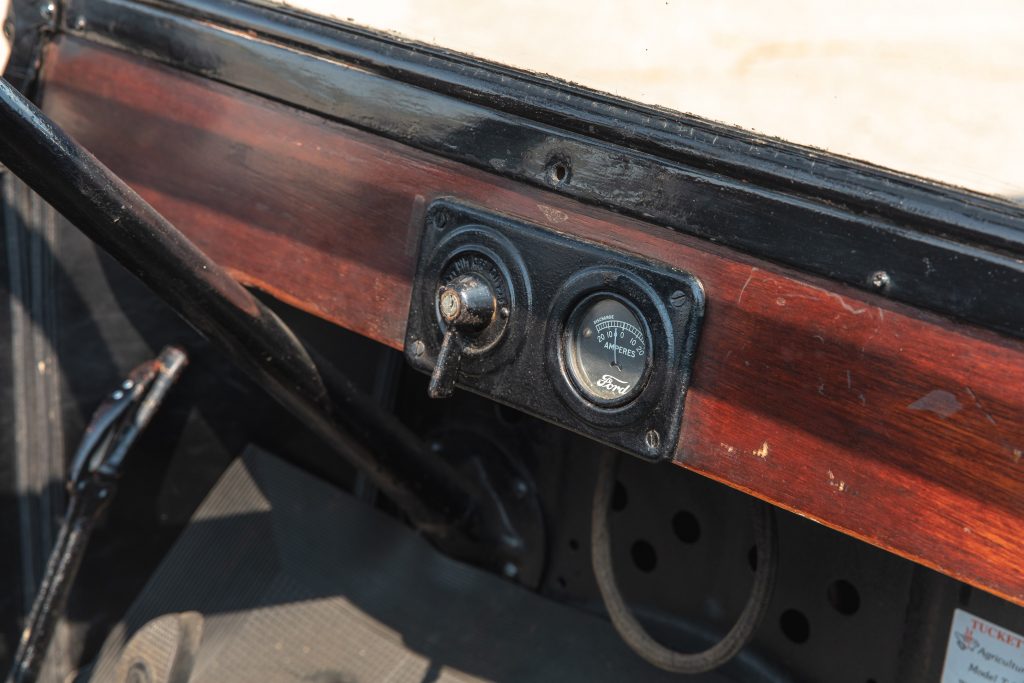
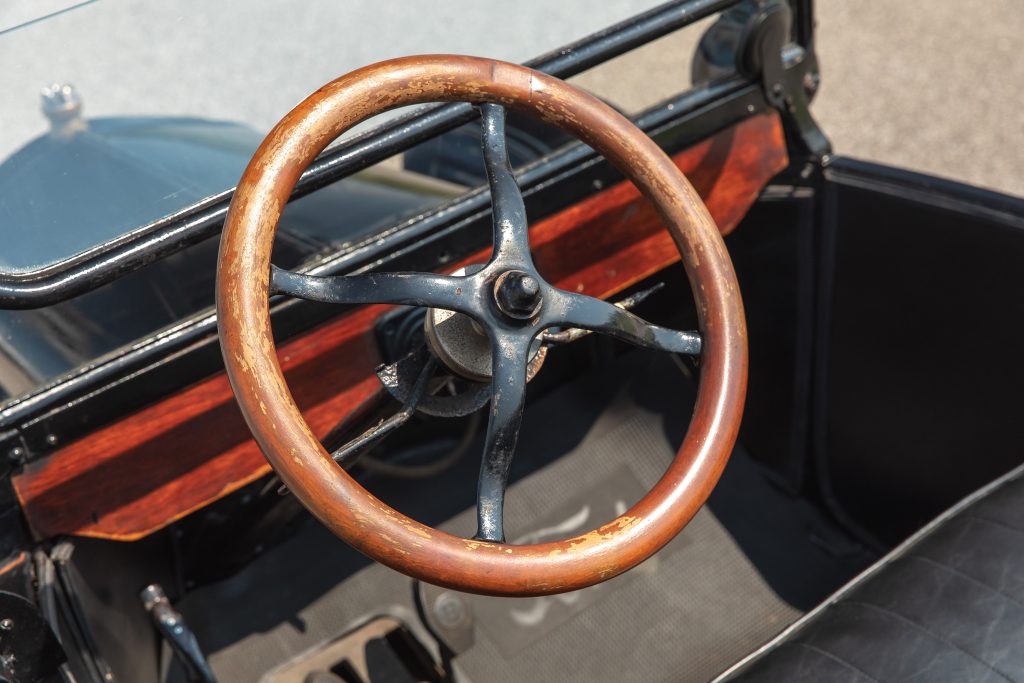
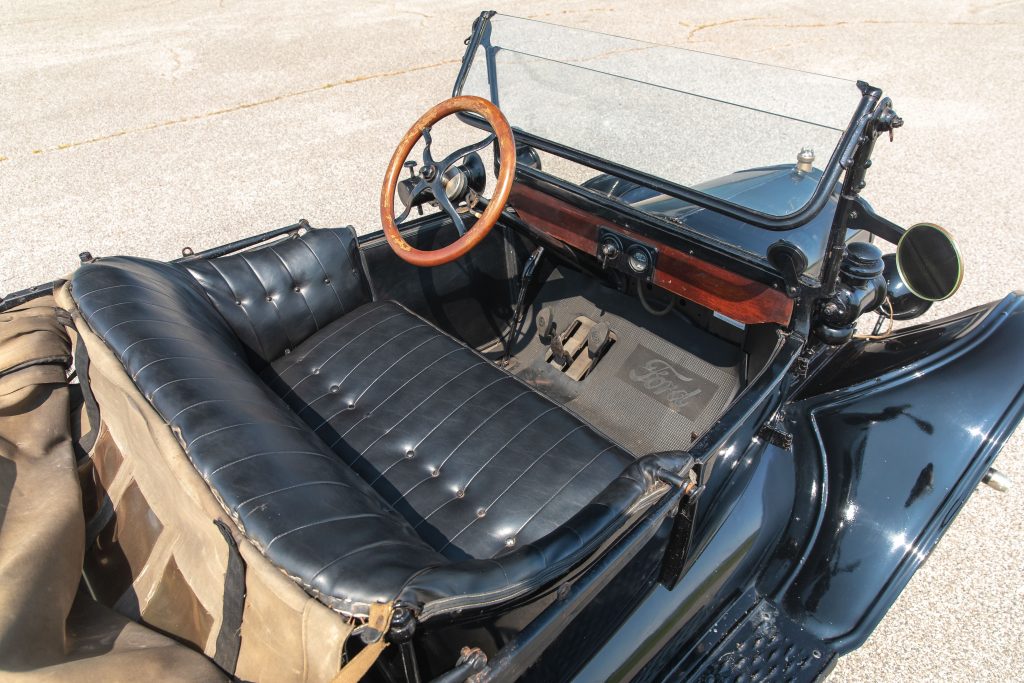
Slowing (and I use the word advisedly) is a matter of holding the left pedal in the middle position and pressing the right-hand brake, but in an emergency, just stand on both and heave on the hand brake.
“Forget everything you know,” is how it was explained to me by Ford’s custodian when I first drove a Model T on the road. Believe me, the sense of not being completely in control is profound.
Yet in the early part of the last century, the Model T (aka Thin Lizzie, Leaping Lena or Flivver) provided a simple, affordable way into motoring for millions. At a time when the early car industry was disappearing down ever more complex and expensive design and engineering rabbit holes, Model T was light, tough, (relatively) easy to drive and cheap. Henry Ford’s former partners had wanted to build luxury cars in small numbers, but the old man had bigger ideas; Model T, he said, “was built for the multitude”.
From the haughty distance of 115 years, it’s fun to pick holes in the old Model T conflating it with a sort of Steinbeck Grapes of Wrath, banjo-playing-hillbilly, illicit-moonshining existence, but that would be to mistake this darn-clever automobile, which for my money is the most important car ever, for a lot of not-so obvious reasons.
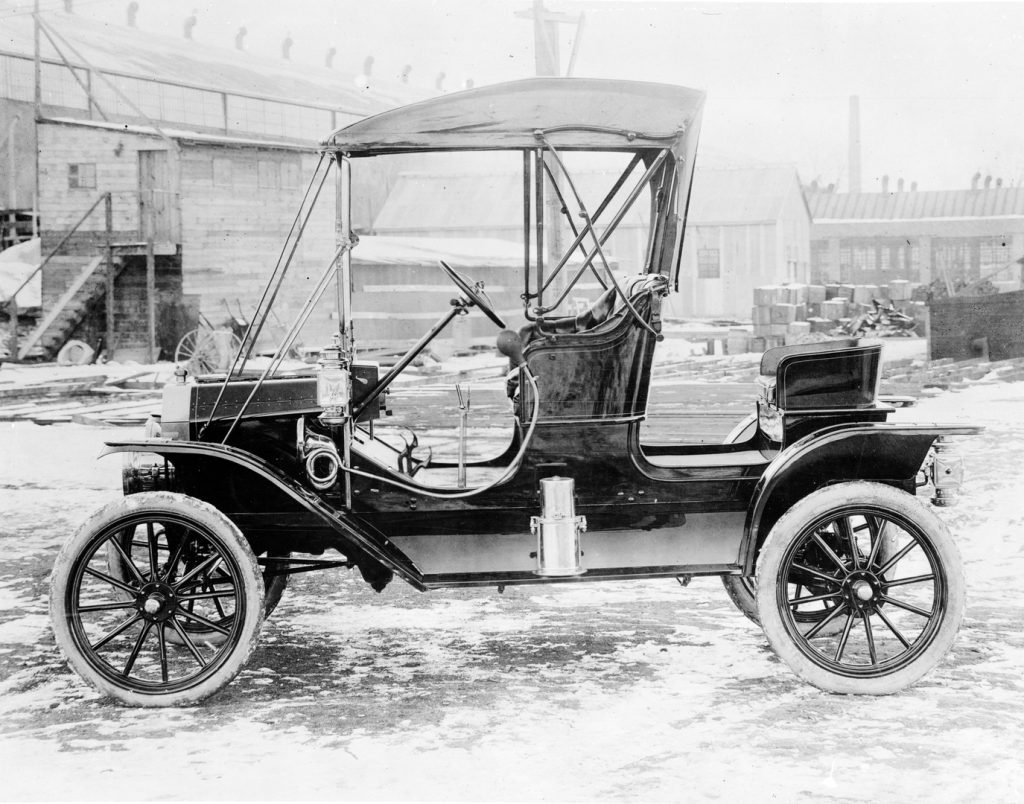
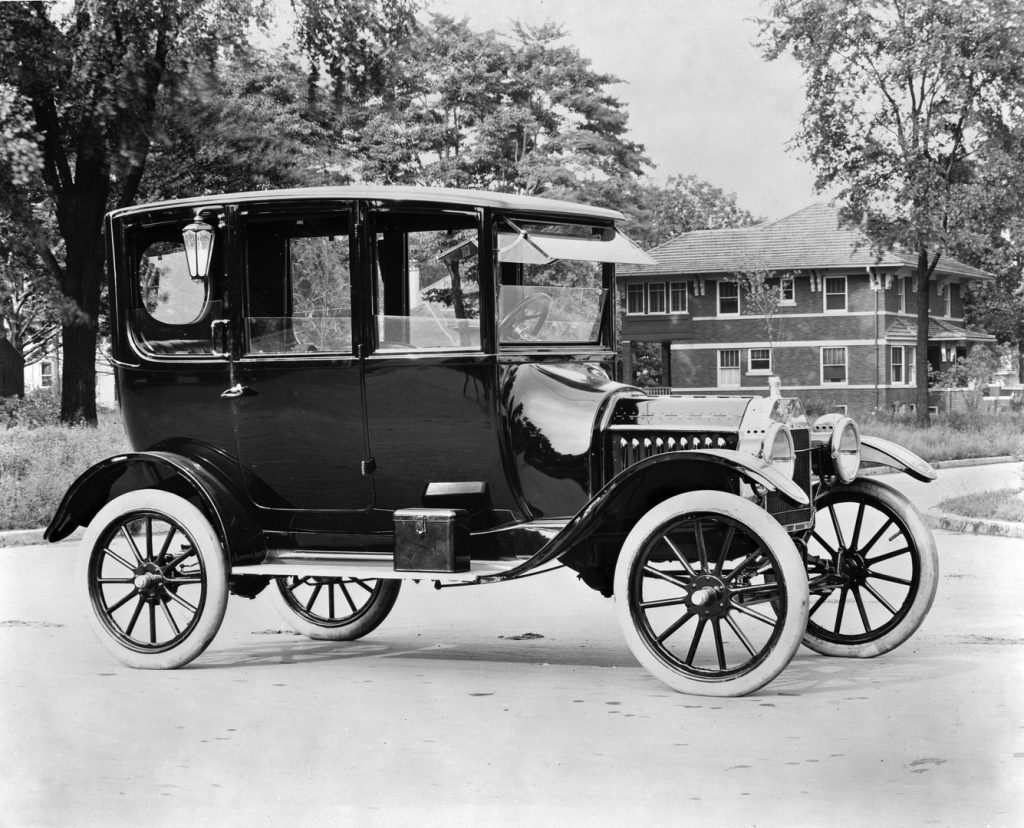
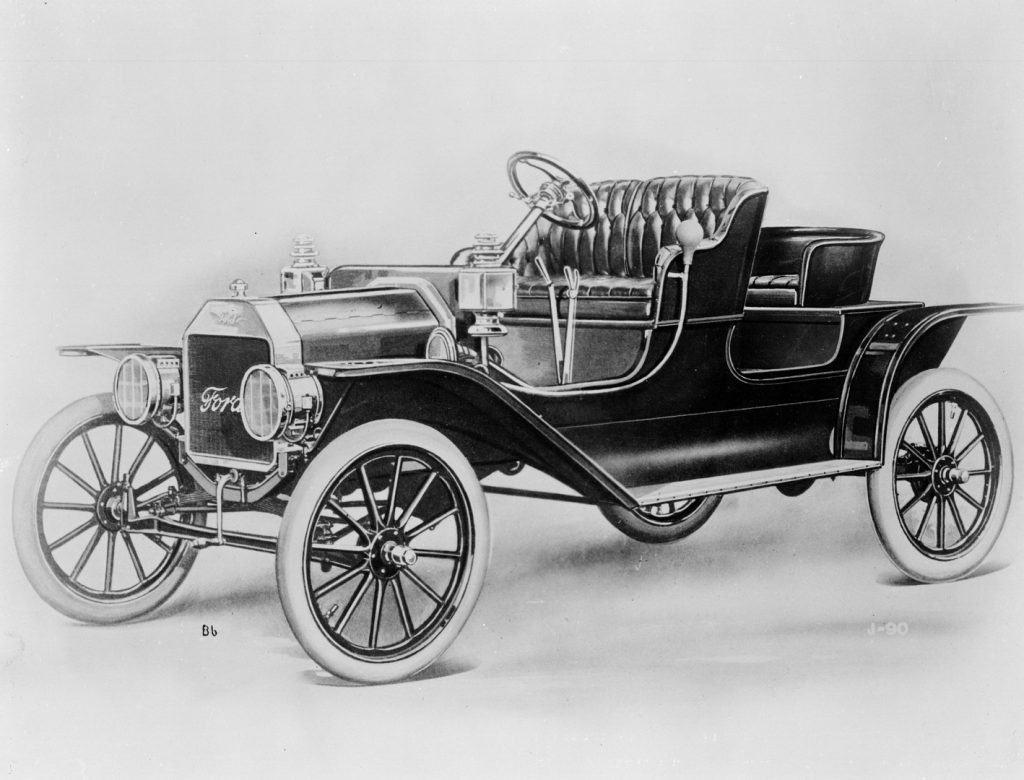
What seems like an over complicated control layout of the two-speed epicyclic gearbox (which features outer planetary gears ‘orbiting’ around the central sun gear) was simple at the time and the average motorist took just ten minutes to become acquainted – Ford even advertised the car to women as simple to drive. And if the brakes seemed bizarre, then remember that the aggregate effect was that whichever combination of pedals the unskilled driver trod on in an emergency, would slow the car to some extent.
While Ransom Olds (of Oldsmobile fame) had developed the automotive production line, Henry Ford took it to new heights. Everything hummed at the River Rouge plant in Detroit and at its peak almost 100 Model Ts would leave the production line in an hour. The plant had a huge appetite for raw materials and Ford spent $20 million buying forests, and mines to secure supplies of wood and steel, and he relied on his friendship with Harvey Firestone for exclusive supplies of tyres.
To satisfy worldwide demand, the company built its largest overseas factory at Trafford Park, Manchester, where it made Model Ts in both car and commercial versions from 1911 until the end of production in 1927.
Total production of 15 million over 19 years meant that craftsmanship had no place in Henry Ford’s world. Production line jobs were deskilled to the extent that the workers were infinitely fungible and each of their movements were analysed by the newly emerging science of Methods Time And Motion espoused by Frederick Winslow Taylor in his 1911 book The Principles of Scientific Management.
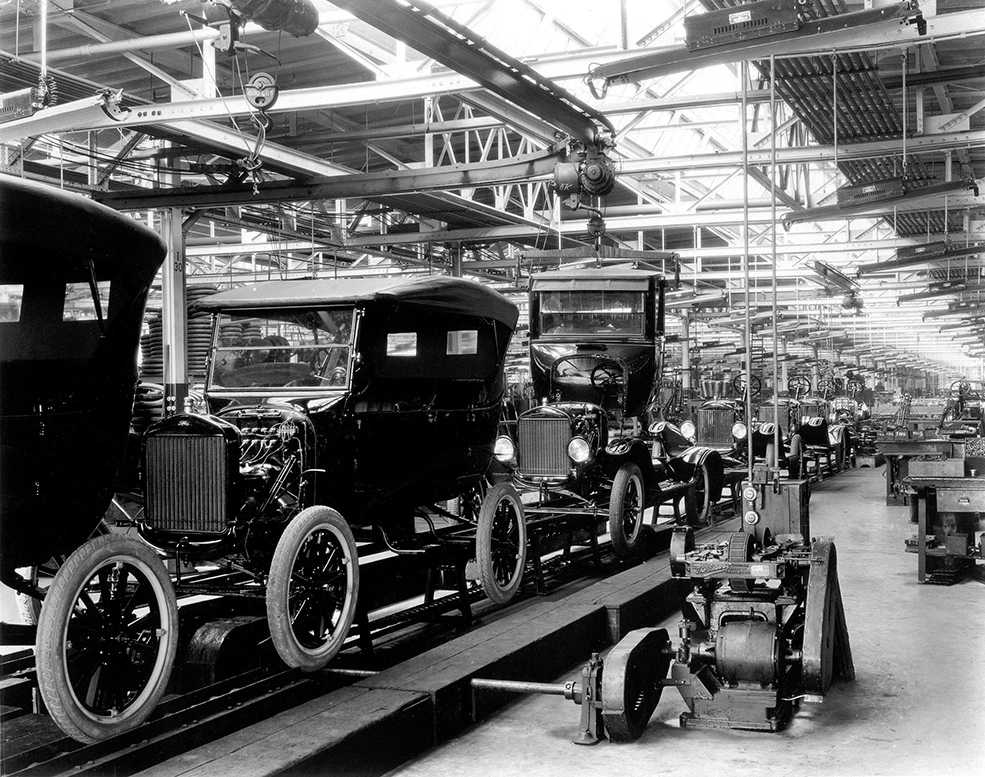
Ford’s production line was as much a mechanical marvel as the car itself, which had to be built to the highest standards of engineering tolerances so that any part could fit any car in any order. This in turn reduced the costs of production. In 1909 the first Model Ts cost $825 in Runabout form, but by 1925 that same car could be bought for little more than $260. These were the stripped-out cars with black bumpers for religious orders such as the Mennonites (members of a protestant church that emerged from the Anabaptists) who allowed car driving, but shunned such fripperies as chromium plate.
Ford claimed he priced the Model T so that his own workers could afford one although that’s pushing the truth a bit – they’d need to save long and hard even if Ford paid a bit more than average as it was cheaper to do that than having to hire and train workers. For all that, the Model T was affordable in a way that rivals simply weren’t.
Its four-cylinder engine gave a top speed of 45mph (and cruising at 40mph) and 28mpg, and that two-speed transmission was fool proof. Myths and legends surround the Model T, including that phrase: ‘any colour you like as long as it’s black” as black paint dried faster, though before 1913 black wasn’t available and Model Ts were only available in grey, green, blue, and red. Yet the use of transverse leaf springs at the front and rear meant the Tin Lizzie only required two of the things which was cheaper and simpler, and Ford had even developed a way of welding up the steel wire wheels (available from 1926), which no one has quite yet worked out.
Motor racing at Ormond Beach, Florida in 1905, Henry Ford saw the use of and benefits of vanadium steel. He analysed a piece of the material from a crashed French car, discovered it was lighter and stronger than anything he had seen and had it used in the Model T’s frame.
And it was super practical. Ford rightly advertised its capability over rough roads, where the benefits of narrow tyres, light weight, as well as lots of wheel travel and axle articulation made it a true trooper. That foot-operated gear change meant you could ‘rock’ the Model T out of a snow drift far easier than what we might regard as more conventional designs. On largely unpaved roads across America’s prairie farms, this little Ford was as agile as a horse but untiring and faster. Popularity with the farming community also gave rise to the legend behind the Pig N’ Ford races at the Tillamook County Fair in Oregon, which is one motor race I’m hoping my editor doesn’t send me to cover…
Model T’s nearest competitor was Buick’s Model 10, which was heavier, less powerful and more expensive. Ford comfortably outsold it; in fact, the Model T outsold everything: Studebaker, Cadillac, Maxwell, Overland, you name it – Model T was quite simply, a phenomenon.
And Henry Ford was a sort of prototypal Elon Musk, disruptive, opinionated, highly controversial and seldom crediting the talented engineers who gave so much to the Model T’s success. Henry Ford also had highly antisemitic views and was admired by Adolf Hitler, yet he was pro-immigration and set up an English school for his workers as he thought that would be safer and more efficient. Above all, though, he was resilient. In 1920, the year of the Wall Street Crash, Ford very nearly went into bankruptcy but to boost flagging sales of the Model T, Henry cut prices by between $105-180, which meant that he was actually losing $20 on every car sold. But the wily 63-year-old compelled his dealers to buy $40 worth of spares with every car they received, mitigating much of that loss.
However, he held on to the car for too long. He thought the world would still coming running if he continued to produce the Model T even while he was developing its replacement the Model A. It didn’t and on May 26th 1927 Henry and his son Edsel drove the last Model T off the line and the car which had inspired Frederick Converse’s 1927 musical composition Flivver Ten Million as well as Mexican artist Diego Rivera’s famous murals of workers at the Rouge plant, was no more.
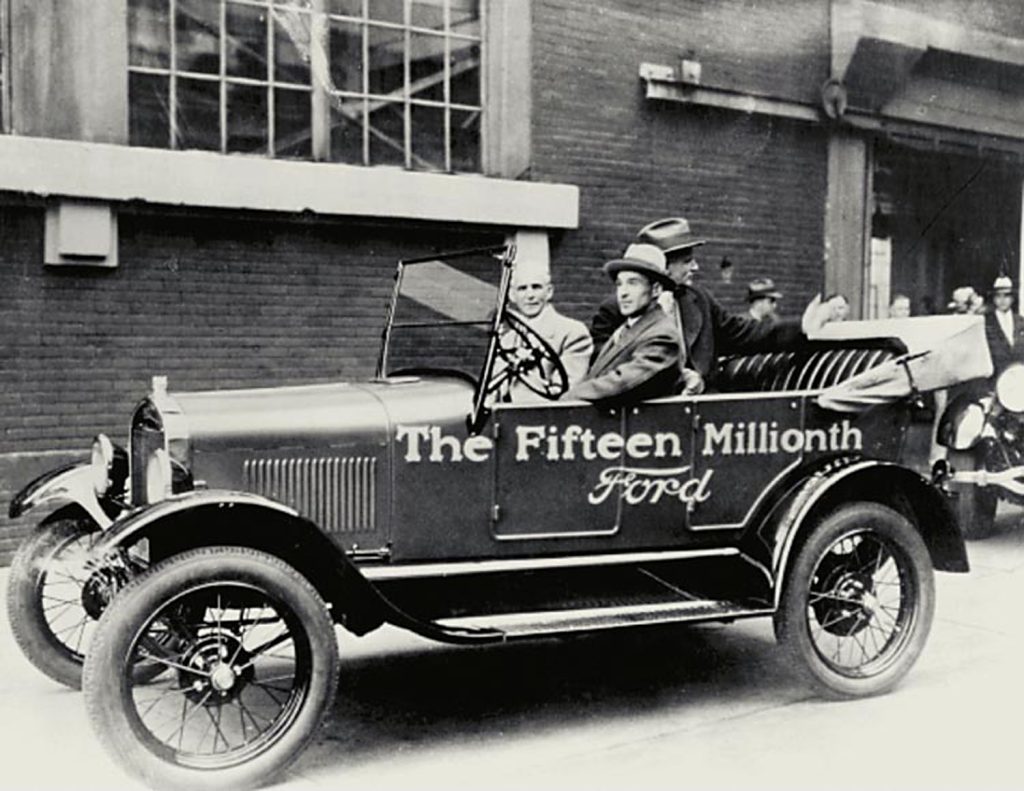
Model T left Ford with an itch for a world car that it couldn’t help scratching, but the Tin Lizzie stands alone and the blue oval never attained quite so much dominance again.
Today to drive a Model T is both mystifying and profoundly moving. It’s a different car from a different era, is slow and even sounds different from other cars. The modern Model T driver feels by turns exposed but also like the royalty of the road since almost every everything owes its existence to this spindly yet tough-as-teak car.
Anything from £5,000 for a basket case to £25,000 for the best restored and rarest models will get you in the know; everyone should drive a Model T once in their life.
Read more
Say Aloha to the 16-year-old girl who traveled around the world in a Model T
Buying Guide: Ford Model T
116 years before the Mach-E, Henry Ford built this bare-bones, battery-powered Model T









